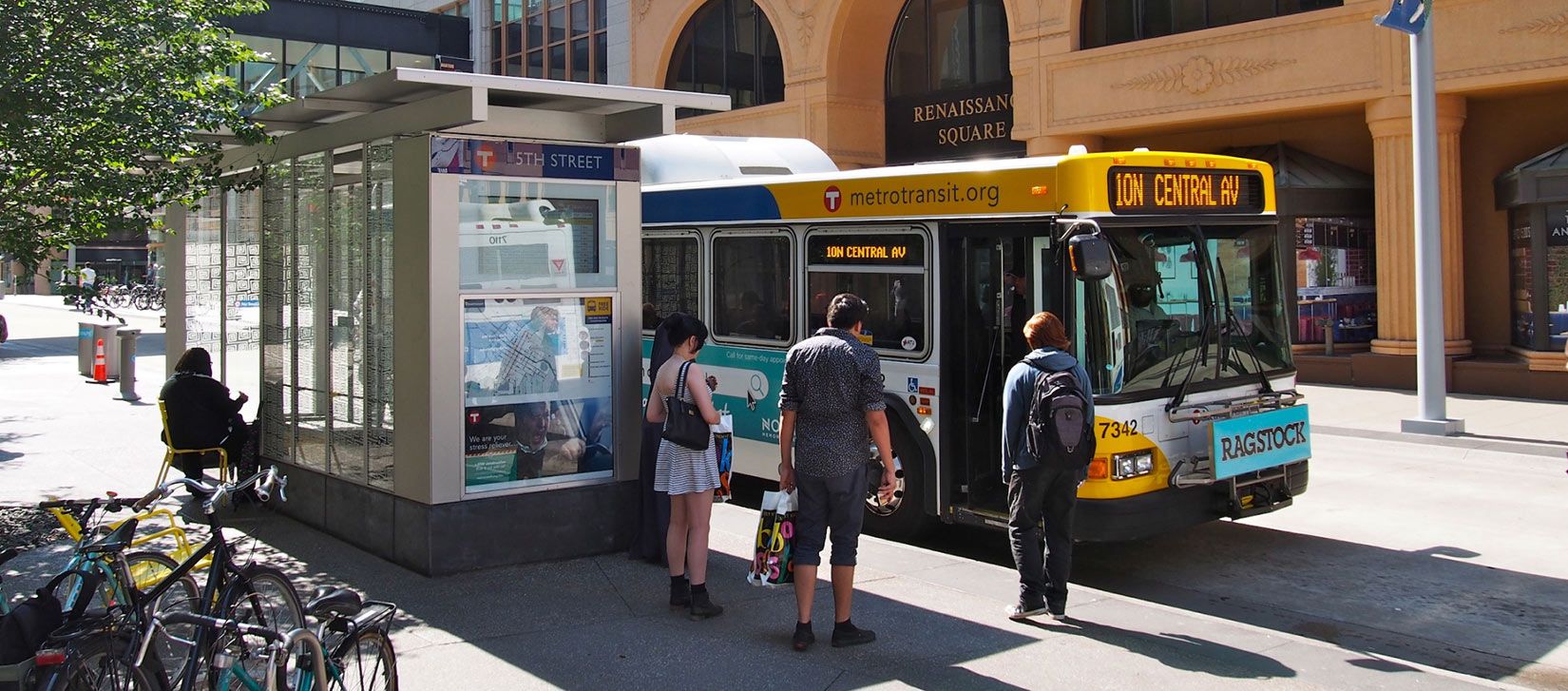Why do we prioritize prosperity?
Minneapolis has been experiencing record-breaking development in recent years, and it is anticipated that nearly 60,000 more people will live in Minneapolis by 2040.1 To retain top talent, grow our educational and employment opportunities, and continue as the economic engine of the region, we must provide mobility options that reliably move people, goods and services (including utilities) throughout the city while significantly reducing our climate footprint.
Connecting people to jobs makes our region and city more competitive. Companies are increasingly choosing where to relocate based, in part, on the transportation choices that will be available to their employees. Increasing the number of jobs accessible by transportation options also supports individual prosperity, helping our city reach goals of equity and economic inclusion.
Morning and afternoon commute times are often the busiest times on our streets. As our city continues to grow, our transportation system must get people where they need to go while still meeting our broader goals. In the last 10 years, we've added more than 50,000 new employees due to a mix of population growth and a decrease in unemployment, from 9% in 2010 to 5.5% in 2018.2 This trend is expected to continue in the coming decades as well. With 60,000 more people anticipated by 2040, it is critical that we focus on mode shift and reducing total vehicle miles traveled so that every new person does not equate to one more car on our streets. As we deal with a growing city, it's important that we provide transportation options and services, as well as the supporting infrastructure, to ensure our streets are safe, environmentally friendly and accessible to everyone who lives, works or visits our city.
Minneapolis commuting population3

1 Minneapolis 2040 and the Decennial Census, Metropolitan Council
2 2010 and 2018 American Community Survey 5-Year Estimates
3 American Community Survey 5-Year Estimates (2008-2017) and American Community Survey 3-Year Estimates (2008)
With 60,000 more people anticipated by 2040, it is critical that we focus on mode shift and reducing total vehicle miles traveled so that every new person does not mean one more car on our streets.

 PROSPERITY
PROSPERITY